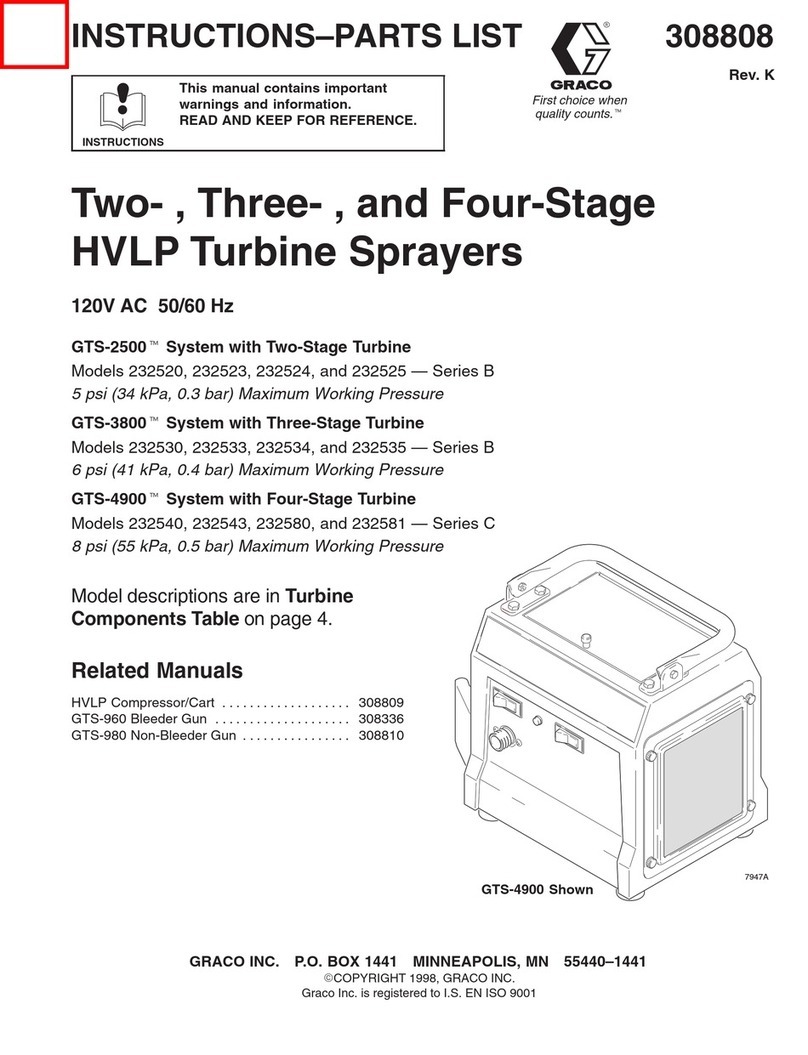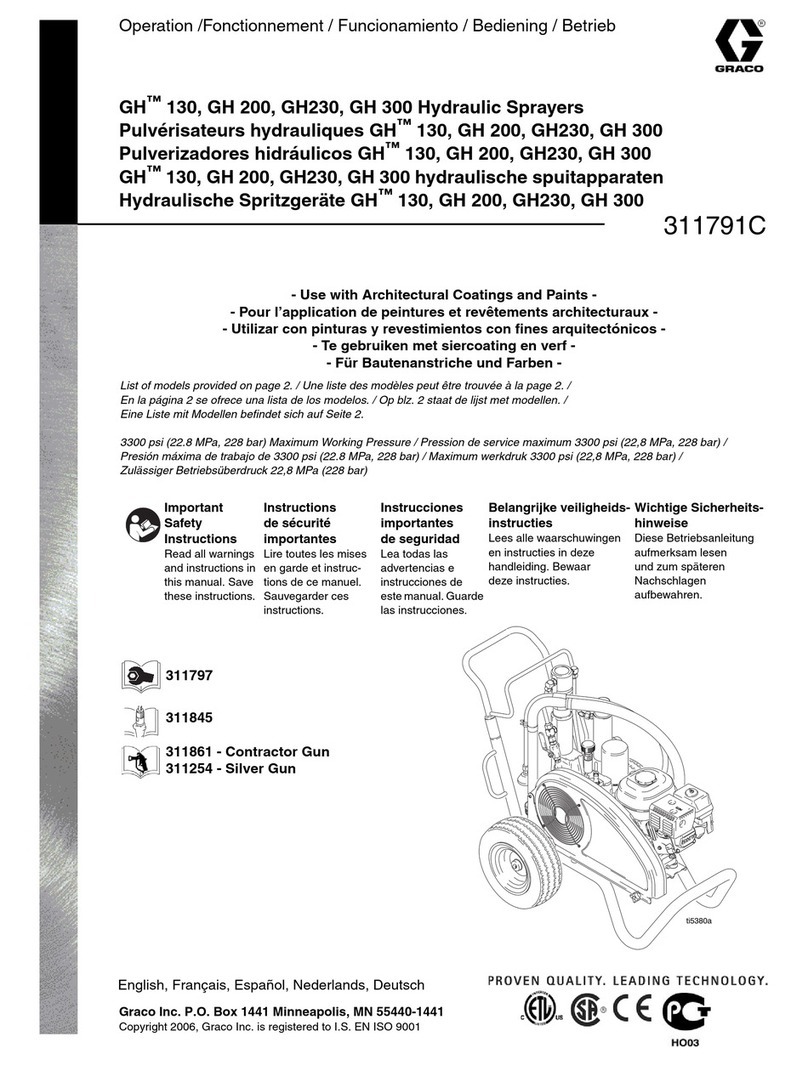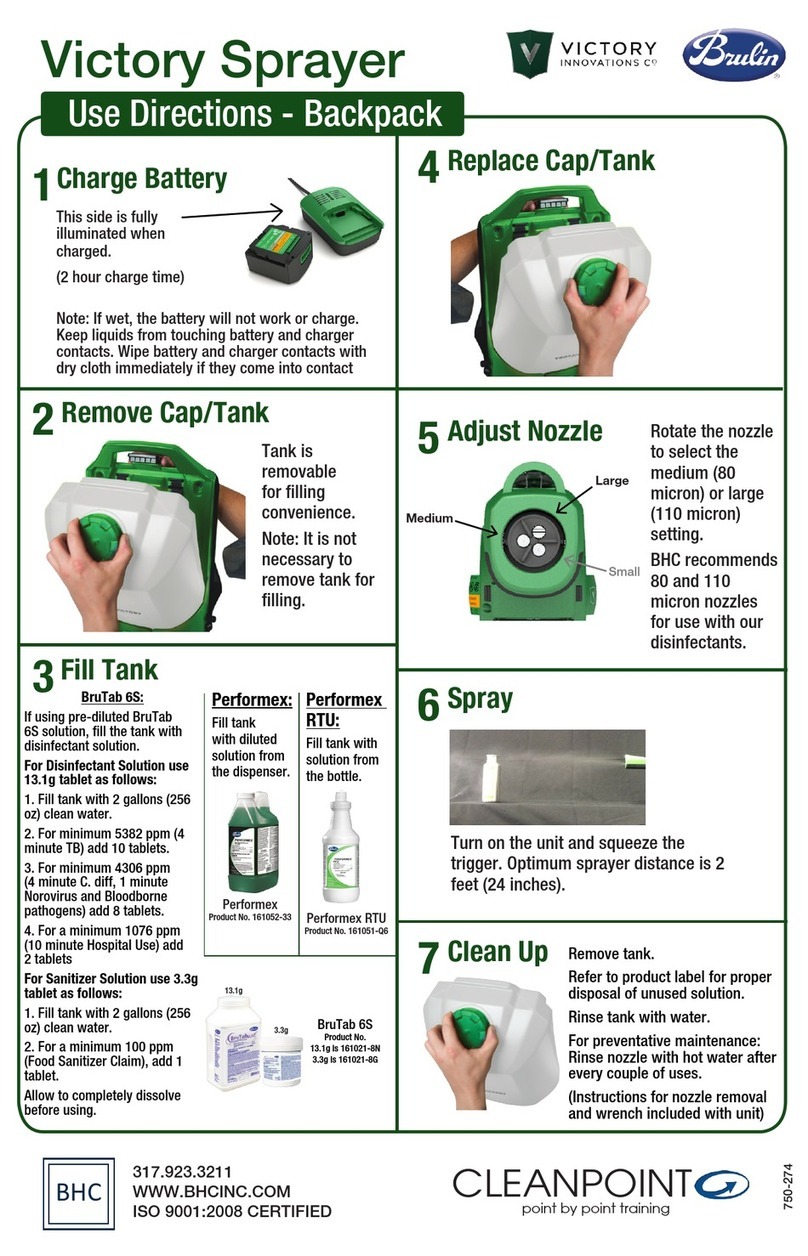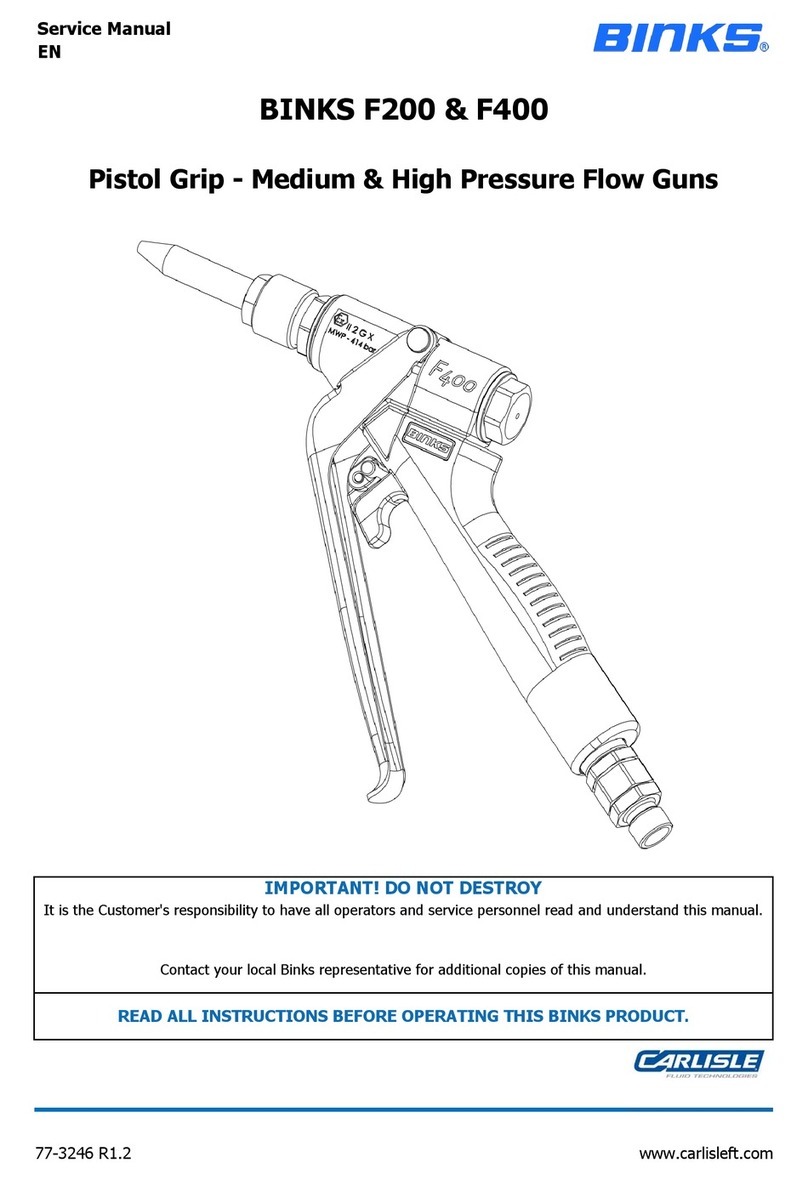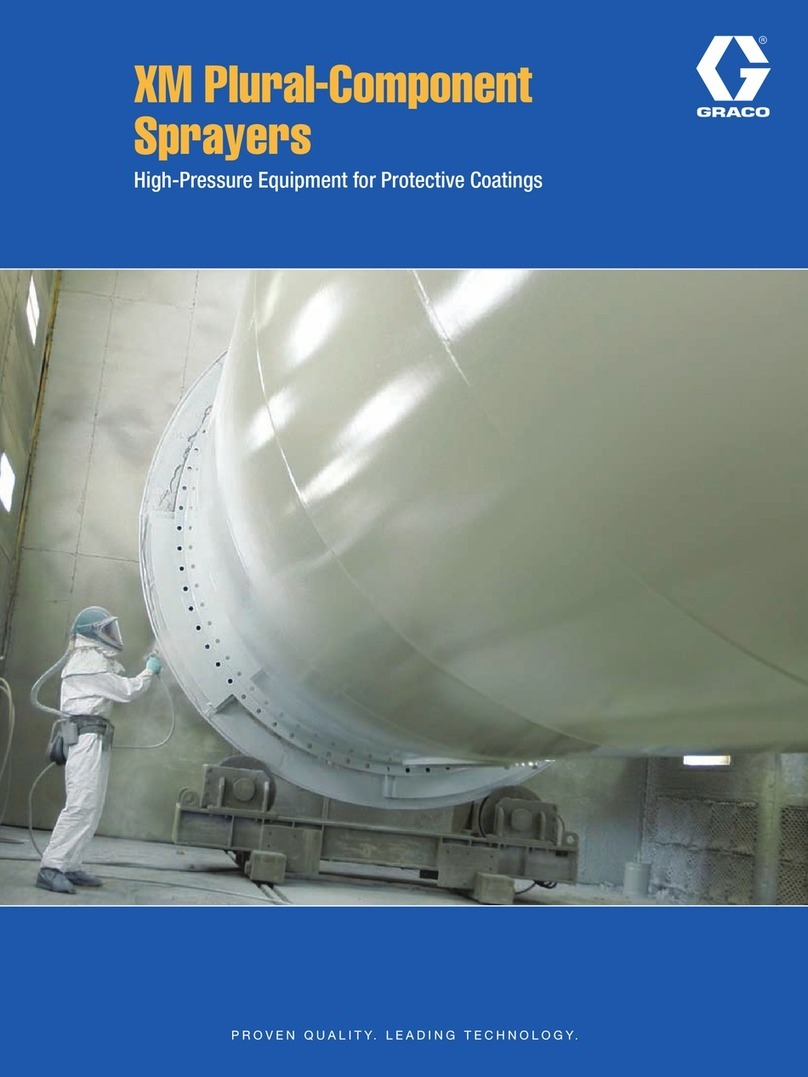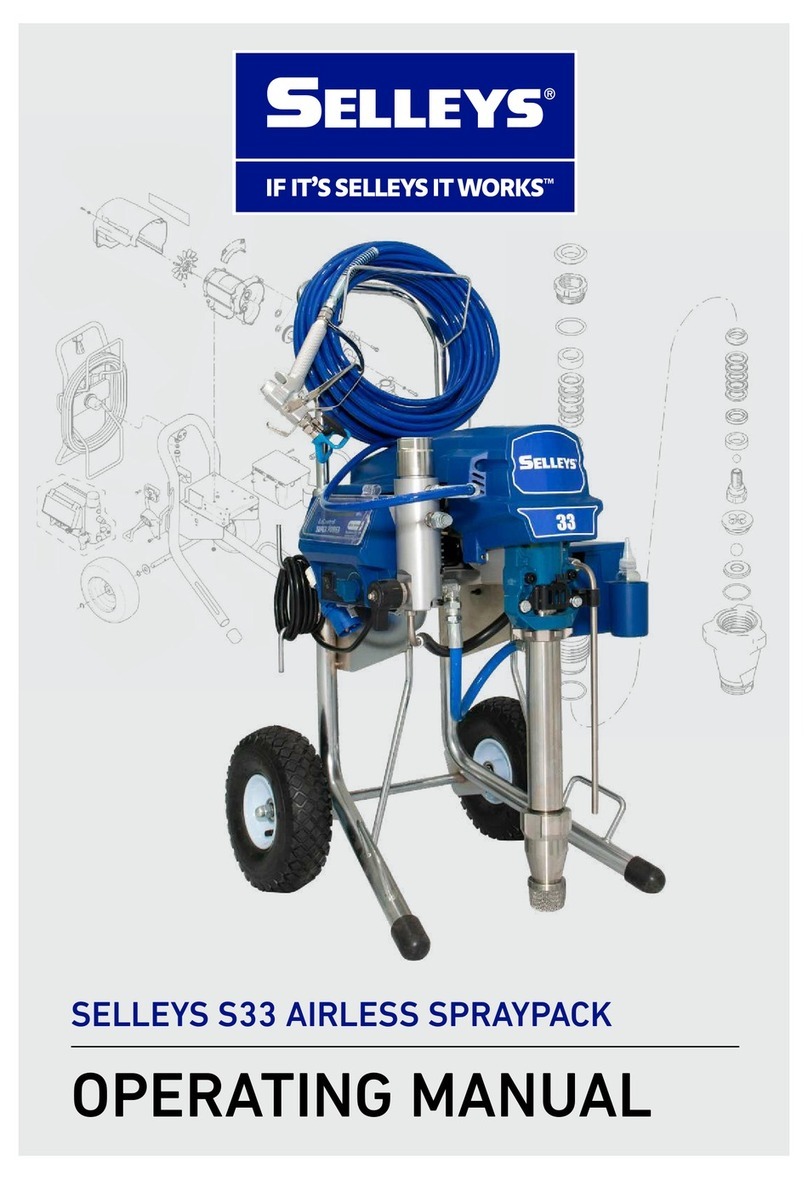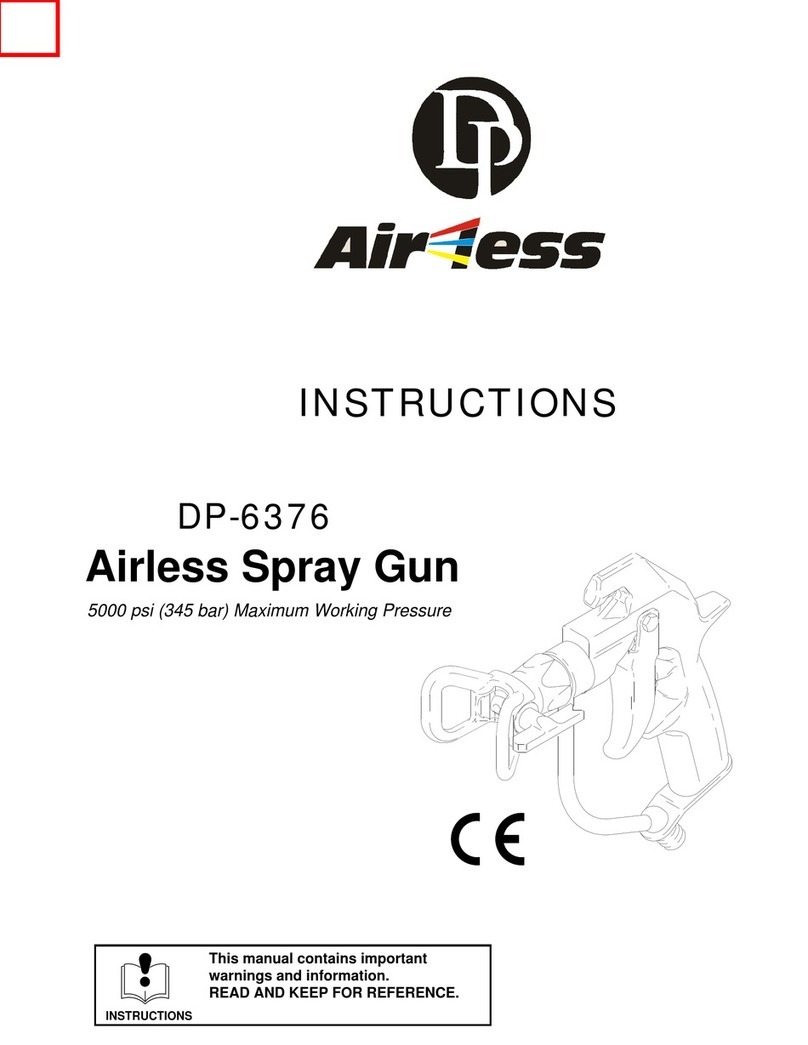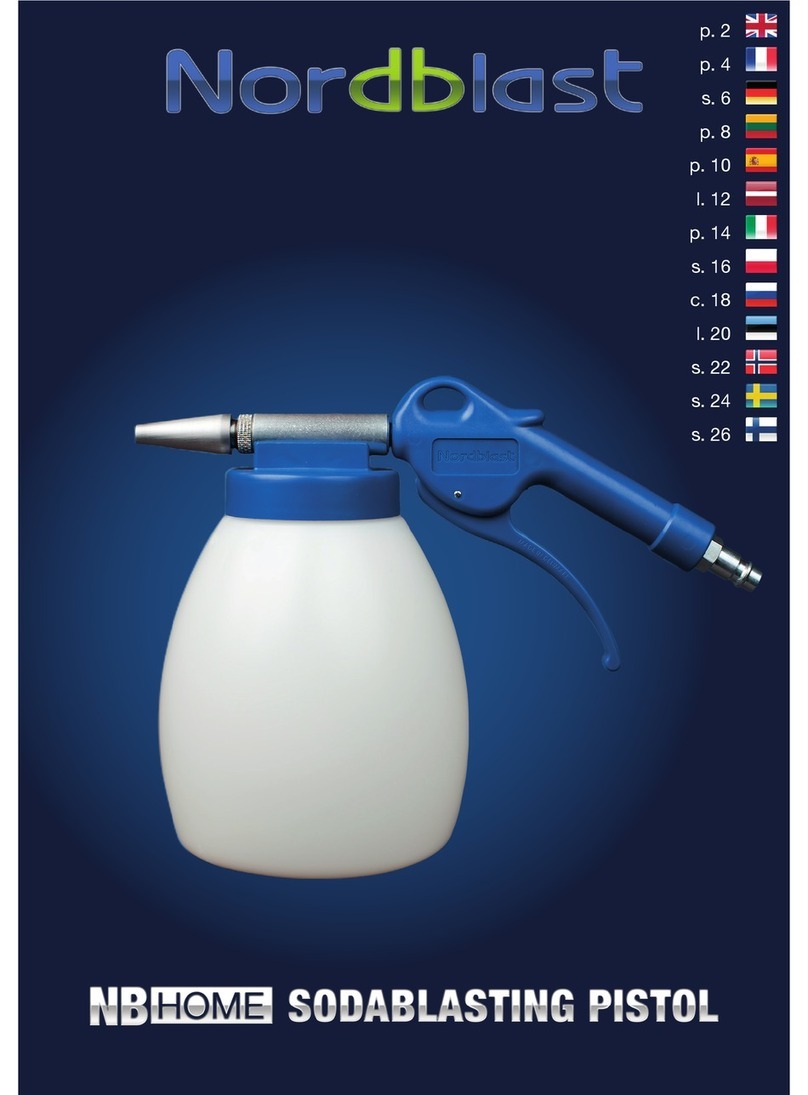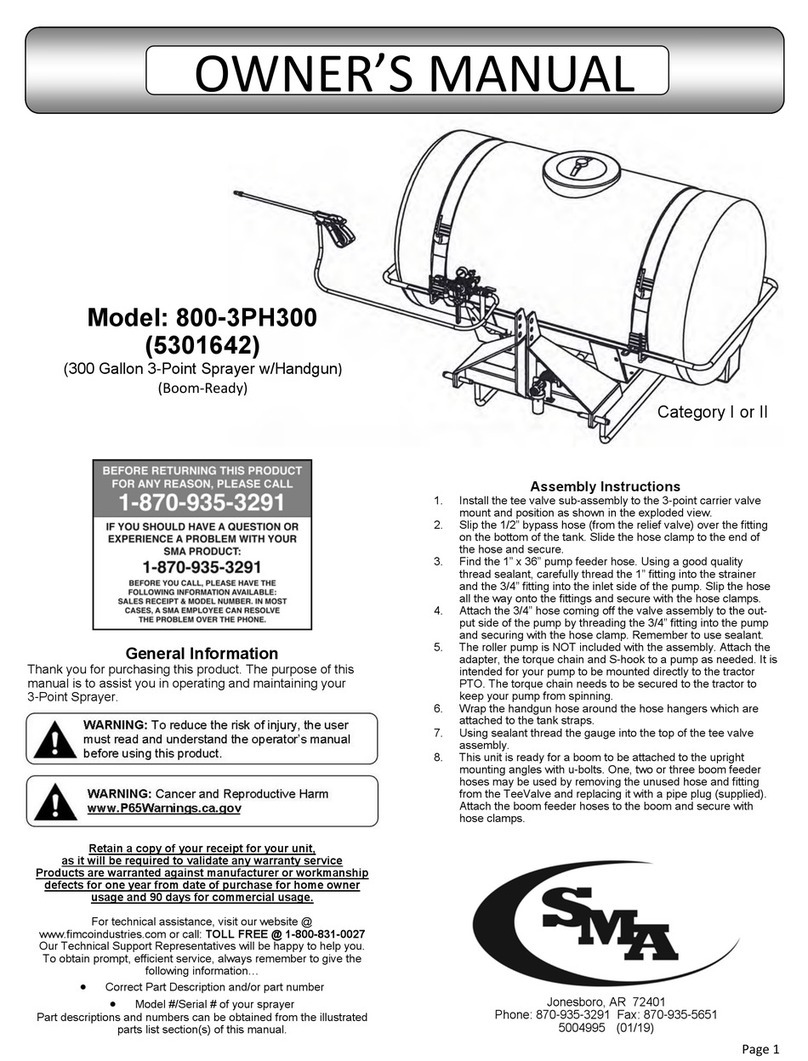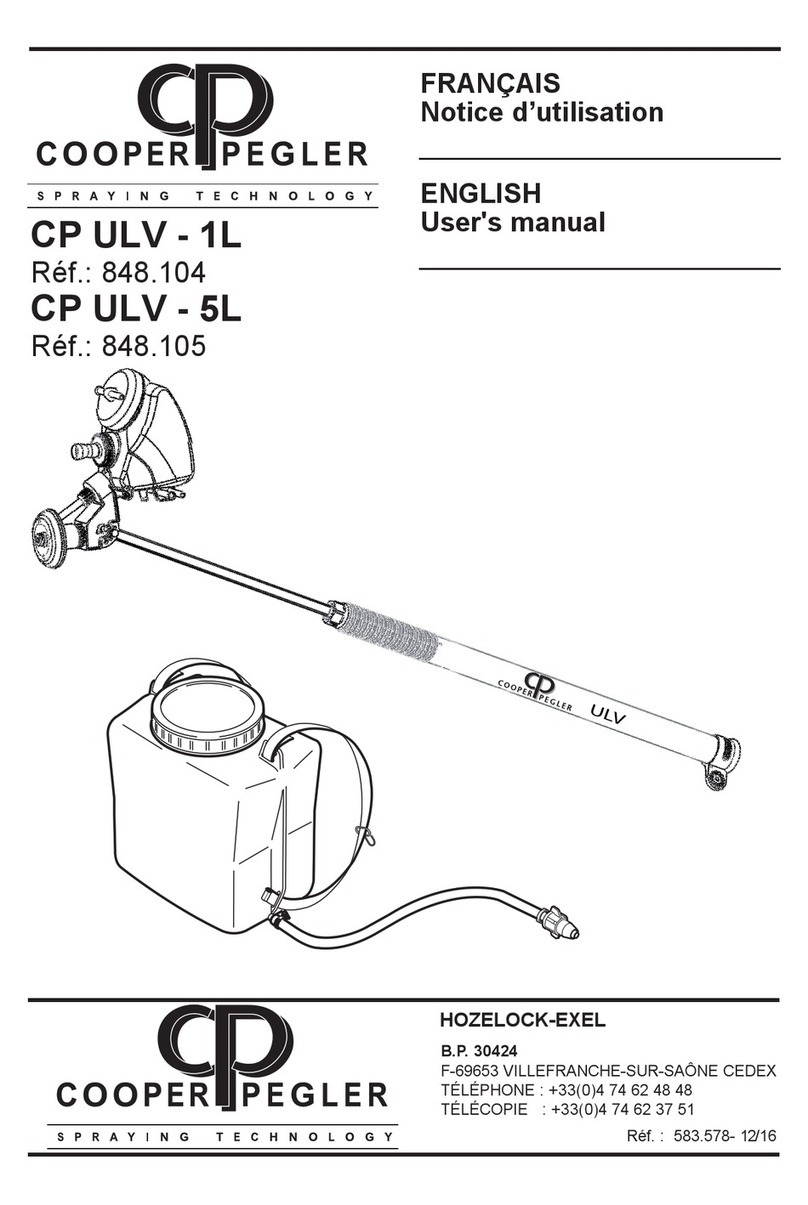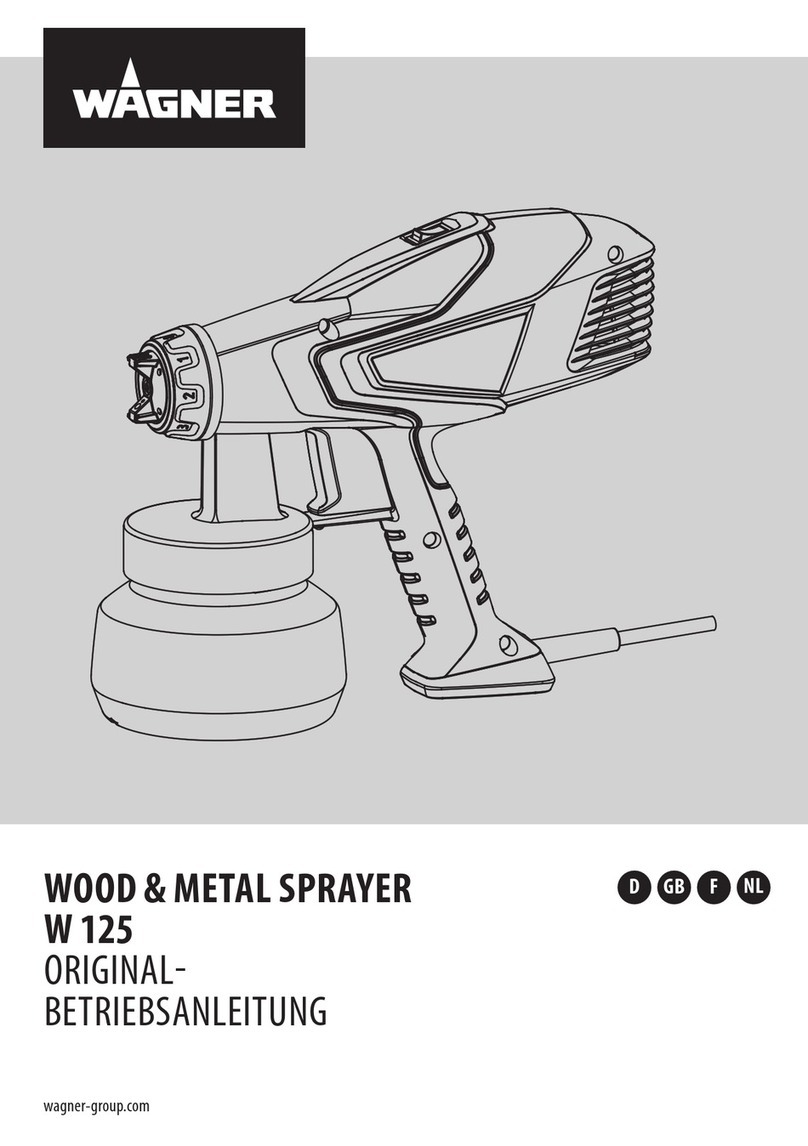Bosch PFS 3000-2 User manual

English | 17
Bosch Power Tools 1 609 92A 162 | (21.4.15)
Geben Sie bei allen Rückfragen und Ersatzteilbestellungen
bitte unbedingt die 10-stellige Sachnummer laut Typenschild
des Produkts an.
Deutschland
Robert Bosch GmbH
Servicezentrum Elektrowerkzeuge
Zur Luhne 2
37589 Kalefeld – Willershausen
Unter www.bosch-pt.com können Sie online Ersatzteile be-
stellen oder Reparaturen anmelden.
Kundendienst: Tel.: (0711) 40040480
Fax: (0711) 40040481
E-Mail: Servicezentrum.Ele[email protected]osch.com
Anwendungsberatung: Tel.: (0711) 40040480
Fax: (0711) 40040482
E-Mail: [email protected]sch.com
Österreich
Unter www.bosch-pt.at können Sie online Ersatzteile bestel-
len.
Tel.: (01) 797222010
Fax: (01) 797222011
E-Mail: service.elektrowerkzeu[email protected].com
Schweiz
Unter www.bosch-pt.com/ch/de können Sie online Ersatz-
teile bestellen.
Tel.: (044) 8471511
Fax: (044) 8471551
E-Mail: [email protected]h.com
Luxemburg
Tel.: +32 2 588 0589
Fax: +32 2 588 0595
E-Mail: outillage.gere[email protected]osch.com
Entsorgung
Sprühpistole,Elektroeinheit,ZubehörundVerpackungensol-
len einer umweltgerechten Wiederverwertung zugeführt wer-
den.
Werfen Sie Elektrowerkzeuge nicht in den Hausmüll!
Nur für EU-Länder:
Gemäß der Europäischen Richtlinie
2012/19/EU über Elektro- und Elektronik-
Altgeräte und ihrer Umsetzung in nationales
Recht müssen nicht mehr gebrauchsfähige
Elektrowerkzeuge getrennt gesammelt und
einer umweltgerechten Wiederverwertung
zugeführt werden.
Änderungen vorbehalten.
English
Safety Notes
General Power Tool Safety Warnings
Read all safety warnings and all instruc-
tions. Failure to follow the warnings and
instructions may result in electric shock, fire and/or serious
injury.
Save all warnings and instructions for future reference.
The term “power tool” in the warnings refers to your mains-
operated (corded) power tool or battery-operated (cordless)
power tool.
Work area safety
Keepworkareaclean andwell lit.Clutteredor darkareas
invite accidents.
Do not operate power tools in explosive atmospheres,
such as in the presence of flammable liquids, gases or
dust. Power tools create sparks which may ignite the dust
or fumes.
Keep children and bystanders away while operating a
power tool. Distractions can cause you to lose control.
Electrical safety
Power tool plugs must match the outlet. Never modify
the plug in any way. Do not use any adapter plugs with
earthed (grounded) power tools. Unmodified plugs and
matching outlets will reduce risk of electric shock.
Avoidbodycontactwith earthedor groundedsurfaces,
such as pipes, radiators, ranges and refrigerators.
There is an increased risk of electric shock if your body is
earthed or grounded.
Do not expose power tools to rain or wet conditions.
Waterenteringa power toolwillincrease theriskof electric
shock.
Do not abuse the cord. Never use the cord for carrying,
pulling or unplugging the power tool. Keep cord away
from heat, oil, sharp edges and moving parts.Damaged
or entangled cords increase the risk of electric shock.
When operating a power tool outdoors, use an exten-
sion cord suitable for outdoor use. Use of a cord suitable
for outdoor use reduces the risk of electric shock.
If operating a power tool in a damp location is unavoid-
able, use a residual current device (RCD) protected
supply. Use of an RCD reduces the risk of electric shock.
Personal safety
Stay alert, watch what you are doing and use common
sense when operating a power tool. Do not use a power
toolwhileyou are tired or under the influence of drugs,
alcohol or medication. A moment of inattention while op-
erating power tools may result in serious personal injury.
Use personal protective equipment. Always wear eye
protection. Protective equipment such as dust mask,
non-skid safety shoes, hard hat, or hearing protection
used for appropriate conditions will reduce personalinju-
ries.
WARNING
OBJ_BUCH-2024-004.book Page 17 Tuesday, April 21, 2015 11:16 AM

18 | English
1 609 92A 162 | (21.4.15) Bosch Power Tools
Prevent unintentional starting. Ensure the switch is in
the off-position before connecting to power source
and/or battery pack, picking up or carrying the tool.
Carrying power tools with your finger on the switch or en-
ergising power tools that have the switch on invites acci-
dents.
Remove any adjusting key or wrench before turning
the power tool on. A wrench or a key left attached to a ro-
tating part of the power tool may result in personal injury.
Do not overreach. Keep proper footing and balance at
all times. This enables better control of the power tool in
unexpected situations.
Dress properly. Do not wear loose clothing or jewel-
lery. Keep your hair, clothing and gloves away from
movingparts. Loose clothes, jewellery or long hair can be
caught in moving parts.
If devices are provided for the connection of dust ex-
traction and collection facilities, ensure these are con-
nected and properly used. Use of dust collection can re-
duce dust-related hazards.
Power tool use and care
Do not force the powertool. Use the correct power tool
for your application. The correct power tool will do the
job better and safer at the rate for which it was designed.
Do not use the power tool if the switch does not turn it
on and off. Any power tool that cannot be controlled with
the switch is dangerous and must be repaired.
Disconnect the plug from the power source and/or the
battery pack from the power tool before making any
adjustments, changing accessories, or storing power
tools. Such preventive safety measures reduce the risk of
starting the power tool accidentally.
Store idle power tools out of the reach of children and
do not allow persons unfamiliar with the power tool or
these instructions to operate the power tool. Power
tools are dangerous in the hands of untrained users.
Maintain power tools. Check for misalignment or bind-
ing of moving parts, breakage of parts and any other
condition that may affect the power tool’s operation. If
damaged, have the power tool repaired before use.
Many accidents are caused by poorly maintained power
tools.
Keepcuttingtools sharp and clean.Properly maintained
cutting toolswith sharp cutting edgesareless likelytobind
and are easier to control.
Use the power tool, accessories and tool bits etc. in ac-
cordance with these instructions, taking into account
the working conditions and the work to be performed.
Use of the power tool for operations different from those
intended could result in a hazardous situation.
Service
Haveyourpower tool serviced by a qualifiedrepairper-
son using only identical replacement parts. This will en-
sure that the safety of the power tool is maintained.
Safety Warnings for Fine-spray Systems
Keep area clean, well lit and free of paint or solvent
containers, rags, and other flammable materials.
Spontaneous combustion may occur. Fire extinguisher
equipment shall be present and working at all times.
Provide for good ventilation in the spraying area and
for sufficient fresh air in the complete room. Evaporat-
inginflammable solventscreate an explosive environment.
Do not spray and clean with materials that have a flash
point of less than 55 °C. Use materials based on water,
non-volatile hydrocarbons or similar materials. Volatile
evaporating solvents create an explosive environment.
Do not spray in the vicinity of ignition sources, such as
static electricity sparks, open flames, pilot lights, hot
objects, engines/motors, cigarettes and sparks from
plugging in or unplugging power cords or operating
switches. Such spark sources can ignite the spraying vi-
cinity/environment.
Do not spray any liquid of unknown hazard potential.
Unknown materials can create hazardous conditions.
Donotspray wallpaper stripper orboiling water. Spray
only warm water (max. 55 °C) without chemical addi-
tives.
Wear additional protective equipment such as appro-
priate protective gloves and protective masks or respi-
rators when spraying or handling chemicals. Wearing
protective equipment for the appropriate conditions re-
duces the exposure to hazardous substances.
Be aware of possible hazards from the spray material.
Observe the information on drums/tanks/tins as well
as manufacturer information of the spray material, in-
cluding the request to wear personal protective equip-
ment. The manufacturer's instructions are to be observed
in order to reduce the risk of fire as well as injuries caused
through toxins, carcinogens, etc.
Keep the plug of the mains cord and the trigger switch
of the spray gun clear of paint and other fluids. Never
hold the cord by its connectors to support it. Failure to
follow the instruction can lead to electric shock.
Supervise children. This will ensure that children do not
play with the fine-spray system.
Products sold in GB only: Your product is fitted with a
BS 1363/A approved electric plug with internal fuse
(ASTA approved to BS 1362).
If the plug is not suitable for your socket outlets, it should
be cut off and an appropriate plug fitted in its place by an
authorised customer service agent. The replacement plug
should have the same fuse rating as the original plug.
The severed plug must be disposed of to avoid a possible
shock hazard and should never be inserted into a mains
socket elsewhere.
Products sold in AUS and NZ only: Use a residual current
device (RCD) with a rated residual current of 30 mA or
less.
OBJ_BUCH-2024-004.book Page 18 Tuesday, April 21, 2015 11:16 AM

English | 19
Bosch Power Tools 1 609 92A 162 | (21.4.15)
Symbols
The sticker regarding operation of the fine-spray system is located on the base station.
Thecorrect interpretationof thesymbolshelps youoperatethefine-spraysystembetter
and more safely.
Symbols and their meaning Detailed description
See“Intended Use”,page 21.
The fine-spray system is
suitable for glazes and
lacquers and for wall paints.
“Wood” application:
Spraying solvent-based and
water-dilutablelacquers, glazes,
primers, clear lacquers, wood
stains and oils
“Wall” application:
Spraying emulsion and latex
paints
See “Changing the Nozzle
Cap”, page 22.
Step 1:
Choose the correct nozzle
cap
Choose the grey nozzle cap 10
for a “wood” application Choose the white nozzle cap 9
for a “wall” application
See “Adjusting the Spraying
Capacity”, page 24.
Step 2:
Set the spraying capacity Select setting 1, 2 or 3 on the
thumbwheel 4for a “wood”
application
Select setting 3, 4 or 5 on the
thumbwheel 4for a “wall”
application
See “Adjusting the Air Flow”,
page 24.
Step 3:
Set the air flow Set “wood” application on the
sliding switch 24 Set “wall” application on the
sliding switch 24
OBJ_BUCH-2024-004.book Page 19 Tuesday, April 21, 2015 11:16 AM

20 | English
1 609 92A 162 | (21.4.15) Bosch Power Tools
Product Description and Specifica-
tions
Read all safety warnings and all instruc-
tions. Failure to follow the warnings and in-
structions may result in electric shock, fire
and/or serious injury.
While reading the operating instructions, unfold the graphics
page for the machine and leave it open.
Intended Use
The power tool is only intended for spraying emulsion and latex
paints, solvent-based and water-dilutable lacquers, glazes,
primers, clear lacquers, wood stains, oils (
ALL
Paint)and water.
The power tool is not suitable for spraying caustic solutions,
acidic coating materials and house paints.
Product Features
The numbering of the components shown refers to the repre-
sentation of the power tool on the graphic pages.
1Spraygun
2Air cap
3Union nut
4Thumbwheel for spraying capacity
5Trigger switch
6Lock ring
7Container for spray material
8Hose port (spray gun)
9Nozzle cap (white: for a “wall” application)
10 Nozzle cap (grey: for a “wood” application)
11 Filling sieve
12 Transfer bucket*
13 Nozzle needle
14 Container seal
15 Suction tube
16 Ventilation hole
17 Paint channel
18 Air hose
19 Bayonet lock
20 Base unit
21 Carrying strap
22 Carrying handle
23 Elastic band (hose holder)
24 Sliding switch for switching on/off and for air flow con-
trol
25 Cleaning brush
26 Air filter cover
27 Hose connection (base unit)
28 Accessory compartment
29 Air filter
*Accessories shown or described are not part of the standard de-
livery scope of the product. A complete overview of accessories
can be found in our accessories program.
Technical Data
Declaration of Conformity
We declare under our sole responsibility that the product de-
scribed under “Technical Data” is in conformity with all rele-
vant provisions of the directives 2011/65/EU, until
19 April 2016: 2004/108/EC, from 20 April 2016 on:
2014/30/EU, 2006/42/EC including their amendments and
complies with the following standards:
EN 60745-1, EN 50580.
Technical file (2006/42/EC) at:
Robert Bosch GmbH, PT/ETM9,
70764 Leinfelden-Echterdingen, GERMANY
Robert Bosch GmbH, Power Tools Division
70764 Leinfelden-Echterdingen, GERMANY
Leinfelden, 02.04.2015
Noise/Vibration Information
Sound emission values determined according to
EN 60745-1, EN 50580.
Typically the A-weighted sound pressure level of the product
is 79 dB(A). Uncertainty K=3 dB.
The noise level when working can exceed 80 dB(A).
Wear hearing protection!
Vibration total values ah(triax vector sum) and uncertainty K
determined according to EN 60745-1, EN 50580:
ah<2.5m/s2, K= 1.5 m/s2.
The vibration level given in this information sheet has been
measured in accordance with a standardised test given in
EN 60745 and maybe usedto compareone toolwith another.It
may be used for a preliminary assessment of exposure.
The declared vibration emission level represents the main appli-
cations of the tool. However if the tool is used fordifferent appli-
cations, with different accessories or insertion tools or is poorly
maintained, the vibration emission maydiffer. This may signifi-
cantly increase the exposure level over the total working period.
Fine-spray System PFS 3000-2
Article number 3 603 B07 1..
Rated power input W650
Spraying capacity ml/min 300
Required time for application
of paint on 2 m2min 1
Container capacity for spray
material ml 1000
Length of air hose m2
Weight according to
EPTA-Procedure 01/2003 kg 3.7
Protection class /II
The values given are valid for a nominal voltage [U] of 230 V. For differ-
ent voltages and models for specific countries, these values can vary.
Henk Becker
Executive Vice President
Engineering
Helmut Heinzelmann
Head of Product Certification
PT/ETM9
OBJ_BUCH-2024-004.book Page 20 Tuesday, April 21, 2015 11:16 AM

English | 21
Bosch Power Tools 1 609 92A 162 | (21.4.15)
An estimation of the level of exposure to vibration should also
takeintoaccountthe timeswhenthe toolisswitchedoffor when
it is running but not actually doing the job. This may significantly
reduce the exposure level over the total working period.
Identifyadditionalsafetymeasures to protectthe operator from
the effects of vibration such as: maintain the tool and the acces-
sories, keep the hands warm, organisation of workpatterns.
Assembly
Before any work on the machine itself, pull the mains
plug.
Ensure that the spray gun and base unit are assembled
completely and with all seals. Only this will ensure the
function and safety of the fine-spray system.
Connecting the Air Hose (see figures A1 – A3)
– Open the elastic band 23 and completely unwind the air
hose 18.
Connecting the base unit:
– Insert a bayonet lock 19 of the air hose securely into the
slotsin the base unit port 27 according tothe arrow marks.
– Turn the bayonet lock a quarter turn clockwise.
Connecting to the spray gun:
– Insert the second bayonet lock 19 of the air hose securely
intotheslots inthespray gun port 8according to the arrow
marks.
– Turn the bayonet lock a quarter turn clockwise.
Note:Remove the air hose 18 before pouring in spray materi-
al (quarter turn of the bayonet lock19 counterclockwise;pull
the bayonet lock 19 out of the port 8).
Changing the Nozzle Cap (see figures B1–B2)
The fine-spray system is supplied with two nozzle caps:
Note: Check the spray material by stirring it before selecting
the nozzle cap. Thin-viscosity material (e.g. wood paint) can
besprayedbetterwiththegreynozzlecap10.Thick-viscosity
material (e.g. wood lacquer or wall paint) can be sprayed bet-
ter with the white nozzle cap 9.
– To change the nozzle cap, unscrew the union nut 3.
– Pull off the air cap 2.
– Unscrew the mounted nozzle cap.
– Open the air filter cover 26 and take the required nozzle
cap out of the accessory compartment 28.
– Screw the required nozzle cap ontothe thread in the spray
gun.
–Puttheaircap2on the nozzle cap and tighten it with the
union nut 3.
Operation
Before any work on the machine itself, pull the mains
plug.
Preparing for Operation
Spraying on the sides of water bodies (lakes, rivers,
etc.) or neighbouring surfaces in the direct catchment
area is not permitted.
When purchasing paint, varnish and spray material, pay at-
tention to their environmental compatibility.
Preparing the Spray Surface
The spray surface must be clean, dry and grease-free.
– Roughen smooth surfaces and then remove the sanding
dust.
When spraying, all non-coveredsurfaces canbe soiled by the
spray mist. Therefore, thoroughly prepare the areaaround
the surface to be sprayed:
– Cover or mask off floors, furnishings, doors, windows as
well as door and window frames, etc.
Preparing the Spray Material
– Stir the spray material thoroughly.
– Dilute the spray material if necessary.
When diluting, pay attention that the spray material
and the diluting agent correspond. When using a faulty
diluting agent, lumpscan develop that can lead to clogging
of the spray gun.
When diluting the spray material, make sure that the
flash point of the mixture is above 55 °C again after di-
luting. Diluting e.g. solvent-based lacquers lowers the
flash point.
Filling in Spray Material (see figures C1–C2)
Note:Remove the air hose 18 before pouring in spray materi-
al (quarter turn of the bayonet lock 19 counterclockwise; pull
the bayonet lock 19 out of the port 8).
– When using large buckets, pour the spray materialinto a
smaller transfer bucket 12 ifnecessary(e.g.10-l wallpaint
into an empty 2.5 or 5.0-l bucket).
– Pull the spray gun off the container 7.
– If you are using already opened spray material, place the
thoroughly cleaned filling sieve 11 on the container 7to
hold back any lumps of paint when pouring in.
Nozzle cap 9 Nozzle cap 10
Colour white grey
Delivery condi-
tion Mounted In the accessory
compartment 28 un-
dertheairfiltercover
26
Application “Wall” “Wood”
Spray material Recommended
dilution
Wood stains, oils, glazes,
impregnations, anti-rust primers 0%
Solvent-dilutable or water-dilutable
lacquers, primers, radiator lacquers,
thick-coat glazes
0–10%
Emulsion paint, latex paint 0–10 %
– Hold the spray gun in place with one hand and use
the other hand to turn the container 7towards the
open symbol.
OBJ_BUCH-2024-004.book Page 21 Tuesday, April 21, 2015 11:16 AM

22 | English
1 609 92A 162 | (21.4.15) Bosch Power Tools
– Pour the spray material into the container 7up to nomore
than the 1000 mark.
– Carry out a test-spray run on a test surface. (see “Spraying
(see figures E–H)”, page 23)
When the spraying pattern is perfect, start the spray job.
or
When the spraying result is not satisfactory or when no paint
comesout, pleasecontinueasdescribedunder“Correctionof
Malfunctions” on page 25.
Starting Operation
Observe the mains voltage! The voltage of the power
source must correspond with the data on the type plate of
the machine.
Pay attention that the base unit cannot draw in dust or
other contamination during operation.
Make sure never to spray on the base unit.
Stop spraying if fluid escapes from places other than
the intended nozzle during spraying, and restore the
spray gun to its proper condition. There is a risk of elec-
tric shock.
Do not direct the fine-spray system against yourself,
other persons or animals.
Switching On (see figure D)
To save energy, only switch the fine-spray system on when
you are using it.
– Check whether the correct nozzle cap is mounted (see
“Changing the Nozzle Cap”, page 22).
– Plug the mains plug into a socket outlet.
– Grasp the spray gun by the handle and point it at the spray
surface.
– Set the sliding switch 24 to the required application to reg-
ulate the air flow (see also “Adjusting the Air Flow”,
page 24).
– Pull the trigger switch 5on the spray gun.
Note: Air always flows out at the air cap 2when the base unit
is switched on.
Switching Off
– Letgo of thetriggerswitch 5andslidetheslidingswitch24
all the way to the left (position).
– Pull the mains plug from the socket outlet.
Working Advice
Spraying (see figures E–H)
Note: Observe the wind direction when operating the power
tool outdoors.
– Firstly, carry out a test-spray run and adjustthe spray pat-
tern and the spray material quantity accordingto the spray
material. (For adjustments, see the following sections)
– Beabsolutelysureto hold the spray gunata consistent dis-
tance of 20–25 cm perpendicular to the spray object.
– Begin the spraying procedure outside the target area.
– Move the spray gun evenly horizontal or vertical, depend-
ing on the spray pattern setting.
Aneven surface quality isachievedwhenthepathsoverlap
by 4 – 5 cm.
– When spraying horizontal objects or spraying overhead,
holdthe spray gunataslight angle andback away from the
sprayed surface.
Risk of stumbling! Pay attention to possible obstacles
in the room.
– Avoid interruptions within the spray surface.
Guiding the spray gun evenly will provide uniform surface
quality.
Non-uniform clearance and spray angle lead to heavy forma-
tion of paint mist and thus to an uneven surface.
– End the spraying procedure outside the target area.
Never completely empty the container for the spray material
by spraying. If the suction tube is no longer immersed in the
spray material, the spray jet will be interrupted and this will
result in an inconsistent surface.
If spray material settles on the air cap 2or the nozzle cap,
clean the components with the supplied cleaning brush 25.
Adjusting the Spray Pattern (see figure I)
Never actuate the trigger switch 5 while adjusting the
air cap 2.
–Turntheaircap2to the requested position.
– Put the spray gun on the container7. Turn the con-
tainer7towardstheclosesymboluntilyouhearthe
lock ring 6engage.
Air cap Spray jet pattern Application
Vertical flat jet for
horizontal working
direction
Horizontal flat jet
for vertical working
direction
Round jet for cor-
ners, edges and
hard to reach loca-
tions
OBJ_BUCH-2024-004.book Page 22 Tuesday, April 21, 2015 11:16 AM

English | 23
Bosch Power Tools 1 609 92A 162 | (21.4.15)
Adjusting the Spraying Capacity (see figure J)
(PAINTVolume)
– Turn the thumbwheel 4to set the required spraying capac-
ity:
Settings 1/2/3: “wood” application,
settings 3/4/5: “wall” application.
Adjusting the Air Flow (see figure D)
(AIRVolume)
– Set the sliding switch 24 to the appropriate application to
set the correct air flow and pressure for the spraymaterial
used.
Dampening wallpaper
To make it easier to remove old wallpaper, you can spray
warm water on the wallpaper (max. 55 °C).
Use the grey nozzle cap 10 to do so.
Work Breaks and Transport (see figures K– L)
A carrying handle 22 and a carrying strap 21 are fitted to the
base unit to enable easy transport of the fine-spray system.
You can hang the base unit 20 across your shoulder during
work using the carrying strap 21.
Thespraygun 1can be put down on aflatwork surface during
breaks. No spray material can leak out.
Alwaysput thespraygunupright onaflatsurfacewhen
it is filled with spray material. Spray material can leak
out from a spray gun if it is lying down.
Maintenance and Service
Maintenance and Cleaning
Before any work on the machine itself, pull the mains
plug.
Thoroughly clean the individual parts of the fine-spray
system after each use, especially all paint-carrying
components. Proper cleaning is a prerequisite for fault-
less and safe operation of the spray gun. No warranty
claims will be accepted if cleaning has not been done at all
or has not been done properly.
If the replacement of the supply cord is necessary, this has to
be done by Bosch or an authorized Bosch service agent in or-
der to avoid a safety hazard.
Cleaning (see figure M)
Always clean the spray gun and the container with the respec-
tive diluting agent (paint thinner or water) for the spray mate-
rial being used.
Never clean the nozzle and air holes in the spray gun with
pointed objects.
– Switch the base unit 20 off.
– Remove the air hose 18 both from the base unit 20 and
from the spray gun 1(quarter turn of the bayonet lock 19
counterclockwise; pull the bayonet lock 19 out of the port
8/27).
– Clean the base unit if necessary with a cloth moistened
with diluting agent and then remove the base unit 20 and
the air hose 18 from the immediate cleaning environment.
– Press the trigger switch 5on the spray gun so that the
spray material can flow back into the container.
– Unscrew the container 7and empty the remaining spray
material back into the original spray material.
– Fill the container 7halfway with the diluting agent (solvent
or water) and fit it to the spray gun 1again.
– Shake the spray gun several times.
– Unscrew the container 7and empty the container com-
pletely into an empty material tin.
– Remove the union nut 3, the air cap 2, the nozzle cap used
9/10 and the suction tube 15 with the container seal 14.
– Cleanallpaint-carryingpartsinabucketwithdilutingagent
using the cleaning brush25 or a standard washing-up
brush.
Also clean the paint channel 17 of the spray gun 1.
– Check if the suction tube 15 and the container seal 14 are
free of spray material and undamaged.
If required, clean the container seal 14 again with diluting
agent.
Clean the ventilation hole 16 using the cleaning brush 25.
– Clean the outside of the container and the spray gun with a
cloth moistened in paint thinner.
– If required, clean the filling sieve 11 thoroughly with dilut-
ing agent.
– Before mounting, allow all components to dry thoroughly.
– Reassemble the fine-spray system in reverse order.
Slidethecontainer seal14upward again intothegrooveof
the suction tube 15.
Spraying capacity Adjustment
Too much material on target
area: The spraying capacity must
be reduced.
– Turn down by one set-
ting.
Not enough material on target
area: The spraying capacity must
be increased.
–Turnupbyonesetting.
Off “Wood” application “Wall” application
Thin-viscosity spray
material Thick-viscosity spray
material
OBJ_BUCH-2024-004.book Page 23 Tuesday, April 21, 2015 11:16 AM

24 | English
1 609 92A 162 | (21.4.15) Bosch Power Tools
Ensure that the container seal is positioned precisely all
aroundinthesuctiontubegrooveinordertoseal thespray
gun correctly.
Make sure that you slide the suction tube 15 all the way
back onto the paint channel 17.
Cleaning the Air Filter (see figure N)
The air filter 29 must be cleaned occasionally. The air filter
must be replaced if it is heavily soiled.
– Open the air filter cover 26.
– Remove the air filter 29.
– Light soiling:
Tap the air filter 29 to empty it.
or
Heavy soiling:
Cleanthe air filter29underrunningwaterand then leave it
dry thoroughly to prevent mould from forming.
or
Replace the air filter 29.
– Reinsert the air filter.
– Close the air filter cover 26 again.
Material Disposal
Diluting agent and remainders of spray material must be dis-
posed of in an environmentally-friendly manner. Observe the
manufacturer’s disposal information and the localregulations
for disposal of hazardous waste.
Chemicals harmful to the environment may not be disposed
of into soil, groundwater or bodies of water. Never pour
chemicals harmful to the environment into the sewerage sys-
tem!
Storage
– Thoroughly clean the fine-spray system before you put it
into storage and remove the container 7from the spray
gun 1.
Correction of Malfunctions
Problem Cause Corrective Measure
Spray material does not cover
properly Spraying capacity too low Turn the thumbwheel 4towards setting 5
Clearance to targetarea too large Reduce spray distance
Not enough spray material on target area,
too few spray paths sprayed over target area Apply more spraypaths over target area
Spray material too viscous Dilute the spray material again and carry out
a test-spray run
Spray material runs off after
coating Too much spray material applied Turn the thumbwheel 4towards setting 1
Clearance to target area too close Increase spray distance
Viscosity of spray material too low Add original spray material
Spray material applied too often over same
spot Remove spray material; reduce number of
spray paths over same spot
Atomisation too coarse Spraying capacity too high Turn the thumbwheel 4towards setting 1
Air flow too low Slide the sliding switch 24 to the right
White nozzle cap 9mounted (nozzle diame-
ter too large) Mount the grey nozzle cap 10
Nozzle needle 13 soiled Clean nozzle needle
Spray material too viscous Dilute the spray material again and carry out
a test-spray run
Air filter 29 heavily soiled Changing the Air Filter
Excessive paint mist Too much spray material applied Turn the thumbwheel 4towards setting 1
Air flow too high Slide the sliding switch 24 to the left
Clearance to spray surface too large Reduce spray distance
Spray jet pulsates Not enough spray material in container Refill spray material
Suction tube 15 loose Slide the suction tube all the way onto the
paint channel 17
Container seal 14 not positioned or not cor-
rectly positioned in groove of suction tube
15
Mount the container seal 14 precisely all
around in the suction tube groove
Nozzle cap 9/10 loose Tighten the nozzle cap 9/10
OBJ_BUCH-2024-004.book Page 24 Tuesday, April 21, 2015 11:16 AM

English | 25
Bosch Power Tools 1 609 92A 162 | (21.4.15)
After-sales Service and Application Service
Our after-sales service responds to your questions concern-
ing maintenance and repair of your product as well as spare
parts. Exploded views and information on spare parts can al-
so be found under:
www.bosch-pt.com
Bosch’s application service team will gladly answer questions
concerning our products and their accessories.
In all correspondence and spare parts orders, please always
include the 10-digit article number given on the nameplate of
the product.
Great Britain
Robert Bosch Ltd. (B.S.C.)
P.O. Box 98
Broadwater Park
North Orbital Road
Denham
Uxbridge
UB 9 5HJ
At www.bosch-pt.co.uk you can order spare parts or arrange
the collection of a product in need of servicing or repair.
Tel. Service: (0344) 7360109
E-Mail: [email protected]
Ireland
Origo Ltd.
Unit 23 Magna Drive
Magna Business Park
City West
Dublin 24
Tel. Service: (01) 4666700
Fax: (01) 4666888
Australia, New Zealand and Pacific Islands
Robert Bosch Australia Pty. Ltd.
Power Tools
Locked Bag 66
Clayton South VIC 3169
Customer Contact Center
Inside Australia:
Phone: (01300) 307044
Fax: (01300) 307045
Inside New Zealand:
Phone: (0800) 543353
Fax: (0800) 428570
Outside AU and NZ:
Phone: +61 3 95415555
www.bosch.com.au
Republic of South Africa
Customer service
Hotline: (011) 6519600
Gauteng – BSC Service Centre
35 Roper Street, New Centre
Johannesburg
Tel.: (011) 4939375
Fax: (011) 4930126
E-Mail: [email protected]
KZN – BSC Service Centre
Unit E, Almar Centre
143 Crompton Street
Pinetown
Tel.: (031) 7012120
Fax: (031) 7012446
E-Mail: [email protected]m
Spray material dripping at the
nozzle cap Deposit of spray material on the nozzle cap
9/10, the nozzle needle 13 and the air cap 2Clean the nozzle cap, nozzle needle and air
cap
Nozzle loose Tighten the nozzle cap 9/10
Nospraymaterialcomingoutofthe
nozzle cap
Tool will not spray
Sliding switch 24 is in position Set the sliding switch 24 to “wood” or “wall”
application
No pressure build-up in container 7because
container not completely closed Turn the container 7towards the close
symboluntil you hear the lock ring 6en-
gage
Suction tube 15 loose Slide the suction tube all the way onto the
paint channel 17
Nozzle cap 9/10 clogged Clean the nozzle cap
Suction tube 15 clogged Clean suction tube
Ventilation hole 16 on suction tube 15
clogged Clean the suction tube and the ventilation
hole
Container seal 14 missing or damaged Slide a (new) container seal over the suction
tube into the groove
Spray material too viscous Dilute the spray material again and carry out
a test-spray run
Spray material dirty (lumps of paint) Completely empty and clean the spray gun;
pour the spray material through the filling
sieve when filling
Problem Cause Corrective Measure
OBJ_BUCH-2024-004.book Page 25 Tuesday, April 21, 2015 11:16 AM

26 | Français
1 609 92A 162 | (21.4.15) Bosch Power Tools
Western Cape – BSC Service Centre
Democracy Way, Prosperity Park
Milnerton
Tel.: (021) 5512577
Fax: (021) 5513223
E-Mail: [email protected]
Bosch Headquarters
Midrand, Gauteng
Tel.: (011) 6519600
Fax: (011) 6519880
E-Mail: rbsa-hq.pt[email protected]
Disposal
Spray gun, electrical unit, accessories and packaging should
be sorted for environmental-friendly recycling.
Do not dispose of power tools into household waste!
Only for EC countries:
According to the European Directive
2012/19/EU for Waste Electrical and Elec-
tronic Equipment and its implementation
into national right, power tools that are no
longer usable must be collected separately
and disposed of in an environmentally cor-
rect manner.
Subject to change without notice.
Français
Avertissements de sécurité
Avertissements de sécurité généraux pour l’outil
Lire tous les avertissements
de sécurité et toutes les ins-
tructions. Ne pas suivre les avertissements et instructions
peut donner lieu à un choc électrique, un incendie et/ou une
blessure sérieuse.
Conserver tous les avertissements et toutes les instruc-
tions pour pouvoir s’y reporter ultérieurement.
Le terme « outil » dans les avertissements fait référence à
votre outil électrique alimenté par le secteur (avec cordon
d’alimentation) ou votre outil fonctionnant sur batterie (sans
cordon d’alimentation).
Sécurité de la zone de travail
Conserverlazonedetravailpropreetbienéclairée.Les
zones en désordre ou sombres sont propices aux acci-
dents.
Ne pas faire fonctionner les outils électriques en at-
mosphère explosive, par exemple en présence de li-
quides inflammables, de gaz ou de poussières. Les ou-
tils électriques produisent des étincelles qui peuvent
enflammer les poussières ou les fumées.
Maintenir les enfants et les personnes présentes à
l’écart pendant l’utilisation de l’outil. Les distractions
peuvent vous faire perdre le contrôle de l’outil.
Sécurité électrique
Il faut que les fiches de l’outil électrique soient adap-
tées au socle. Ne jamais modifier la fiche de quelquefa-
çon que ce soit. Ne pas utiliser d’adaptateurs avec des
outils à branchement de terre. Des fiches non modifiées
et des socles adaptés réduiront le risque de choc élec-
trique.
Eviter toutcontact du corps avec des surfacesreliées à
la terre telles que les tuyaux, les radiateurs, les cuisi-
nières et les réfrigérateurs. Il existe un risque accru de
choc électrique si votre corps est relié à la terre.
Ne pas exposer les outils à la pluie ou à des conditions
humides. La pénétration d’eau à l’intérieur d’un outil aug-
mentera le risque de choc électrique.
Ne pas maltraiter le cordon. Ne jamais utiliser le cordon
pour porter, tirer ou débrancher l’outil. Maintenir le
cordon à l’écart de la chaleur, du lubrifiant, des arêtes
oudespartiesenmouvement.Lescordonsendommagés
ou emmêlés augmentent le risque de choc électrique.
Lorsqu’on utilise un outil à l’extérieur, utiliser un pro-
longateur adapté à l’utilisation extérieure. L’utilisation
d’uncordon adaptéàl’utilisationextérieureréduitlerisque
de choc électrique.
Si l’usage d’un outil dans un emplacement humide est
inévitable, utiliser une alimentation protégée par un
dispositifà courant différentiel résiduel(RCD).L’usage
d’un RCD réduit le risque de choc électrique.
Sécurité des personnes
Rester vigilant, regarder ce que vous êtes en train de
faire et faire preuve de bon sens dans l’utilisation de
l’outil. Ne pas utiliser un outil lorsque vous êtes fatigué
ou sous l’emprise de drogues, d’alcoolou de médica-
ments. Un moment d’inattention en cours d’utilisation
d’un outil peut entraîner des blessures graves des per-
sonnes.
Utiliser un équipement de sécurité. Toujours porter
une protection pour les yeux. Les équipements de sécu-
rité tels que les masques contre les poussières, les chaus-
sures de sécurité antidérapantes, les casques ou les pro-
tections acoustiques utilisés pour les conditions
appropriées réduiront les blessures des personnes.
Eviter tout démarrage intempestif. S’assurer que l’in-
terrupteur est en position arrêt avant de brancher l’ou-
til au secteur et/ou au bloc de batteries, de le ramasser
ou de le porter. Porter les outils en ayantle doigt sur l’in-
terrupteurou brancherdesoutilsdontl’interrupteur esten
position marche est source d’accidents.
Retirer toute clé de réglage avant de mettre l’outil en
marche. Une clé laissée fixée sur une partie tournante de
l’outil peut donner lieu à des blessures de personnes.
Ne pas se précipiter. Garder une position et un équi-
libre adaptés à tout moment. Cela permet un meilleur
contrôle de l’outil dansdes situations inattendues.
AVERTISSEMENT
OBJ_BUCH-2024-004.book Page 26 Tuesday, April 21, 2015 11:16 AM
Other manuals for PFS 3000-2
5
Table of contents
Other Bosch Paint Sprayer manuals
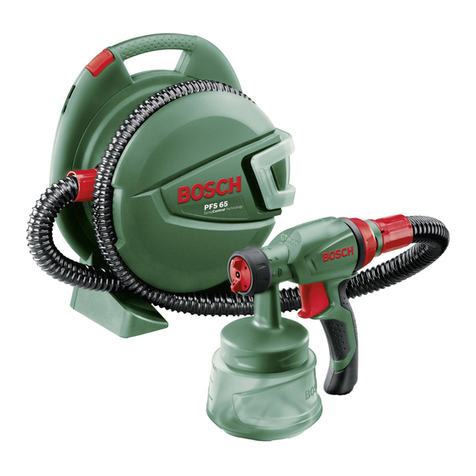
Bosch
Bosch PFS 65 User manual

Bosch
Bosch PFS 105 E User manual
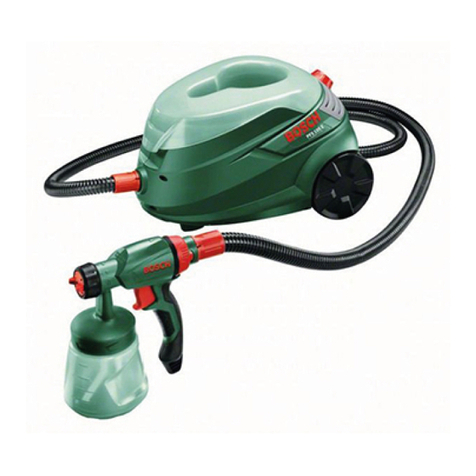
Bosch
Bosch PFS 105 E User manual

Bosch
Bosch PFS 55 User manual

Bosch
Bosch PFS 1000 User manual
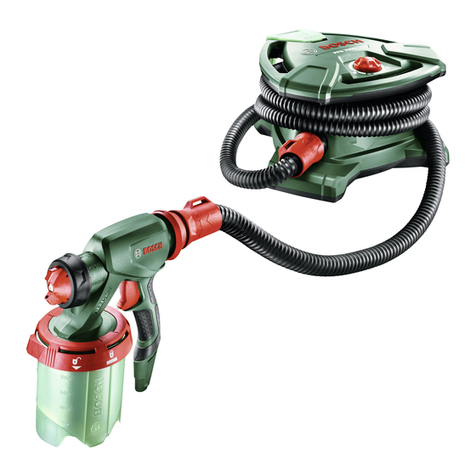
Bosch
Bosch PFS 7000 User manual

Bosch
Bosch PFS 55 User manual
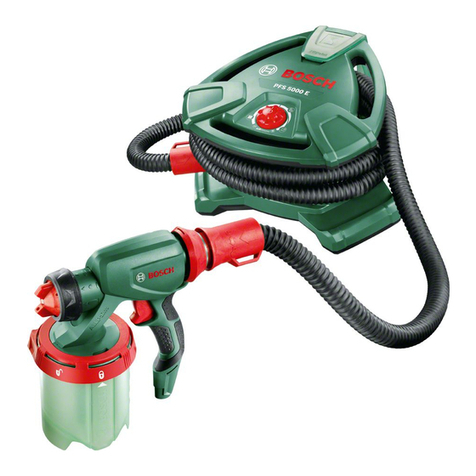
Bosch
Bosch PFS 5000E User manual

Bosch
Bosch PFS 5000E User manual

Bosch
Bosch 2 608 190 048 User manual
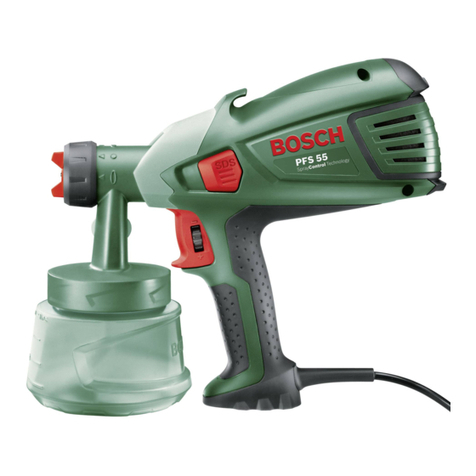
Bosch
Bosch PFS 55 User manual

Bosch
Bosch PFS 3000-2 User manual

Bosch
Bosch PFS 3000-2 User manual

Bosch
Bosch PFS 65 User manual

Bosch
Bosch PFS 105 User manual
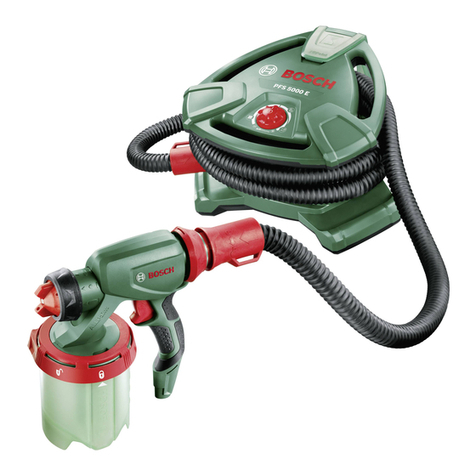
Bosch
Bosch PFS 5000 E User manual

Bosch
Bosch PFS 3000-2 User manual

Bosch
Bosch PFS 1000 User manual

Bosch
Bosch PFS 55 User manual
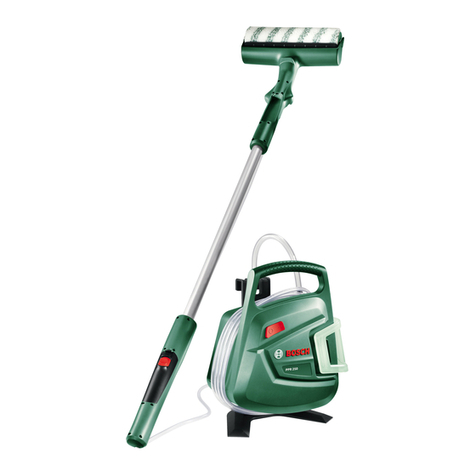
Bosch
Bosch PPR 250 User manual






